‘Raleigh’ Category
» posted on Thursday, March 7th, 2013 by Linda Lou Burton
Wherever You Go

My Southeast Family in Tampa.
Jason, Linda, Jeffrey, Kaitlyn, Mike, Brenda
plus Justin from the U of Florida, bottom right.
Linda Burton posting from Raleigh, North Carolina – “Wherever you go, there you are.” That pithy quote came from Col Potter on an episode of MASH as the gang dealt with the intricacies of living in Korea in the middle of a war. You’re still you, he was saying, whatever your circumstances and surroundings may be. And the way you deal with life travels with you, wherever you go. I’ve given that theory a run for its money during this last year as the Journey Across America has taken me to twenty-five capital cities to live and to learn – yes, believe it or not, the Journey is now 50% complete! It’s been a whup-ass grand experience so far, exploring this country called the United States; discovering what holds us together and spotting those things that sometimes keep us apart. The good thing I’ve found is that we have more in common than we don’t, no matter the variety of choices we make from  state to state. If our roots go back to Europe or Africa or Asia or either of the Americas, we, in time, adapt to what we find, wherever we may go. But along the way we put our spin on things; hey, that’s the spice of life, and I’m finding that the USA is one big spicy meatball; tasty, and so appealing to the senses, the spirit, and the mind! As I finish up my last day in Raleigh, I’ll bring you up to date. And pass along “thumbs up” from my Southeast family. » read more
state to state. If our roots go back to Europe or Africa or Asia or either of the Americas, we, in time, adapt to what we find, wherever we may go. But along the way we put our spin on things; hey, that’s the spice of life, and I’m finding that the USA is one big spicy meatball; tasty, and so appealing to the senses, the spirit, and the mind! As I finish up my last day in Raleigh, I’ll bring you up to date. And pass along “thumbs up” from my Southeast family. » read more
» posted on Sunday, March 3rd, 2013 by Linda Lou Burton
Sunday in the Park with George
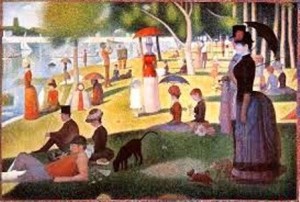 Linda Burton posting from Raleigh, North Carolina – Stephen Sondheim (b 1930) is an accomplished American composer best known for his contributions to musical theater. In 1984 he and James Lapine put together a Broadway production called Sunday in the Park with George. It opened to mixed reviews, but in the end, wound up winning a Pulitzer Prize for drama, two Tony Awards for design, the 1991 Olivier Award for Best Musical, and the 2007 Olivier Award for Outstanding Musical Production. The play was inspired by a painting called A Sunday Afternoon on the Island of La Grande Jatte, done by George Seurat (1859-1891), a French Post-Impressionist painter. It took George two years to complete this 10-foot-wide piece that shows members of different social classes participating in various
Linda Burton posting from Raleigh, North Carolina – Stephen Sondheim (b 1930) is an accomplished American composer best known for his contributions to musical theater. In 1984 he and James Lapine put together a Broadway production called Sunday in the Park with George. It opened to mixed reviews, but in the end, wound up winning a Pulitzer Prize for drama, two Tony Awards for design, the 1991 Olivier Award for Best Musical, and the 2007 Olivier Award for Outstanding Musical Production. The play was inspired by a painting called A Sunday Afternoon on the Island of La Grande Jatte, done by George Seurat (1859-1891), a French Post-Impressionist painter. It took George two years to complete this 10-foot-wide piece that shows members of different social classes participating in various 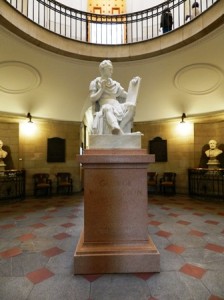 park activities on a Sunday afternoon; he devised an innovative technique for it called “pointillism,” using tiny juxtaposed dots of color, rather than physically blending the colors on canvas. Very different in its day, and as you might guess, the painting “opened to mixed reviews;” today however it is recognized as a work that altered the direction of modern art. So what does this have to do with Raleigh, North Carolina? I’m about to tell you the story of Antonio Canova (1757-1822), an Italian sculptor, and the controversial statue he did of George Washington (1732-1799) that sits in the rotunda of the North Carolina capitol today. It wasn’t meant to be controversial, of course, and what you see today isn’t what Canova did in 1820; but, well, I’d better start from the beginning to explain. » read more
park activities on a Sunday afternoon; he devised an innovative technique for it called “pointillism,” using tiny juxtaposed dots of color, rather than physically blending the colors on canvas. Very different in its day, and as you might guess, the painting “opened to mixed reviews;” today however it is recognized as a work that altered the direction of modern art. So what does this have to do with Raleigh, North Carolina? I’m about to tell you the story of Antonio Canova (1757-1822), an Italian sculptor, and the controversial statue he did of George Washington (1732-1799) that sits in the rotunda of the North Carolina capitol today. It wasn’t meant to be controversial, of course, and what you see today isn’t what Canova did in 1820; but, well, I’d better start from the beginning to explain. » read more
» posted on Friday, March 1st, 2013 by Linda Lou Burton
If I Were A Squirrel
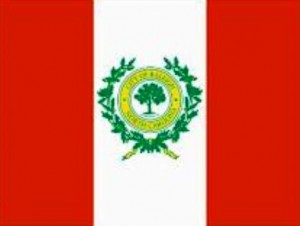 Linda Burton posting from Raleigh, North Carolina – If I were a squirrel, I’d move to Raleigh to raise my family, and live out my retirement days. Raleigh, you see, is rich with oak trees, so much so that its nickname is the “City of Oaks.” Oak trees are everywhere you look; white oaks are native trees; red oaks too, happy in the Piedmont clime and soil; they graced the land when settlers came; they shade the parks and line the streets today. The Seal of Raleigh has an oak tree center spot; the same thing on the city flag. Oakwood is the city’s oldest neighborhood; oak trees have witnessed history, and known their share of fame, such as the Henry Clay Oak, which stood near North Street and Blount; he wrote the Raleigh Letter while sitting underneath in 1844 (he argued
Linda Burton posting from Raleigh, North Carolina – If I were a squirrel, I’d move to Raleigh to raise my family, and live out my retirement days. Raleigh, you see, is rich with oak trees, so much so that its nickname is the “City of Oaks.” Oak trees are everywhere you look; white oaks are native trees; red oaks too, happy in the Piedmont clime and soil; they graced the land when settlers came; they shade the parks and line the streets today. The Seal of Raleigh has an oak tree center spot; the same thing on the city flag. Oakwood is the city’s oldest neighborhood; oak trees have witnessed history, and known their share of fame, such as the Henry Clay Oak, which stood near North Street and Blount; he wrote the Raleigh Letter while sitting underneath in 1844 (he argued  against the annexation of Texas and later lost the presidential nomination to James K Polk; he commented then “I would rather be right than president.”). In 2007 the City Council put restrictions and guidelines in place to protect the city’s trees, recognizing that “Raleigh is blessed with a diverse and abundant cover of trees and vegetation and…such cover is of general aesthetic value to the City and…the ecological diversity and richness of the City makes it a desirable place for residents, owners, and visitors alike….” Valuable assets for residents, owners, visitors, and squirrels, I say. » read more
against the annexation of Texas and later lost the presidential nomination to James K Polk; he commented then “I would rather be right than president.”). In 2007 the City Council put restrictions and guidelines in place to protect the city’s trees, recognizing that “Raleigh is blessed with a diverse and abundant cover of trees and vegetation and…such cover is of general aesthetic value to the City and…the ecological diversity and richness of the City makes it a desirable place for residents, owners, and visitors alike….” Valuable assets for residents, owners, visitors, and squirrels, I say. » read more
» posted on Wednesday, February 27th, 2013 by Linda Lou Burton
From Axe To Acts
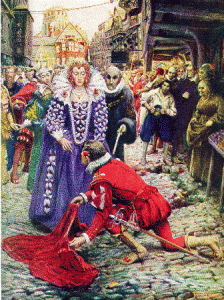 Linda Burton posting from Raleigh, North Carolina – I don’t know about you, but I have always associated Sir Walter Raleigh (1552-1618) with chivalry. He’s the guy who threw down his cape so Queen Elizabeth wouldn’t have to step in a puddle, or so I’d heard. Since I’m in the city that was named for him, I’ve been reading up on the English gentleman, and asking questions of Raleigh residents. But it’s been like those Jimmy Kimmel street interviews; I didn’t find a soul who was aware that poor Walter fell out of favor with the royals and was (ouch) beheaded. As was the custom in those days of yore, his embalmed head was delivered to his wife. His body was buried in London in the chancel of St Margaret’s, abutting Westminster; you can visit his tomb today. So was he a chivalrous fellow? Probably so; his resume is an exciting read – aristocrat, courtier, poet, writer, adventurer, explorer, spy. We know he went to Oriel College in Oxford; we know he fought for England in Ireland, helping to put down the Desmond Rebellions. He was a dashing figure
Linda Burton posting from Raleigh, North Carolina – I don’t know about you, but I have always associated Sir Walter Raleigh (1552-1618) with chivalry. He’s the guy who threw down his cape so Queen Elizabeth wouldn’t have to step in a puddle, or so I’d heard. Since I’m in the city that was named for him, I’ve been reading up on the English gentleman, and asking questions of Raleigh residents. But it’s been like those Jimmy Kimmel street interviews; I didn’t find a soul who was aware that poor Walter fell out of favor with the royals and was (ouch) beheaded. As was the custom in those days of yore, his embalmed head was delivered to his wife. His body was buried in London in the chancel of St Margaret’s, abutting Westminster; you can visit his tomb today. So was he a chivalrous fellow? Probably so; his resume is an exciting read – aristocrat, courtier, poet, writer, adventurer, explorer, spy. We know he went to Oriel College in Oxford; we know he fought for England in Ireland, helping to put down the Desmond Rebellions. He was a dashing figure  of 29 when he (supposedly) assisted the Queen with a sweep of his cape; he was granted 40,000 acres of land in Munster not too long after that; he sat in Parliament; he was a favorite in the Queen’s court. Did he ever come to North America? He did not. So what did he do to get himself beheaded, and why was Raleigh, North Carolina named for him some 174 years after his death? » read more
of 29 when he (supposedly) assisted the Queen with a sweep of his cape; he was granted 40,000 acres of land in Munster not too long after that; he sat in Parliament; he was a favorite in the Queen’s court. Did he ever come to North America? He did not. So what did he do to get himself beheaded, and why was Raleigh, North Carolina named for him some 174 years after his death? » read more
» posted on Monday, February 25th, 2013 by Linda Lou Burton
A Feather In My Cap
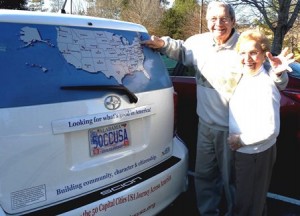 Linda Burton posting from Raleigh, North Carolina – Faithful followers, we have reached the Journey’s halfway point! Raleigh, North Carolina is the 25th stop; I’m on the east coast now and see license plates from Virginia as the “out-of-states” in the parking lot. And Connecticut. I was feeling downright jubilant over my accomplishment as I unloaded the car yesterday. Eleanor and Ed were just arriving too; they asked what in the world was a “Journey Across America;” I explained and invited them to point out their home state. “I’ll be in Connecticut in November,” I promised, as I traced the route between now and then on the Scion’s back-window map. “Meanwhile, I’m living in Raleigh now!” Raleigh, North Carolina, my 25th capital city – what do I know so far? Statistically I know that Raleigh is the 11th largest capital city, with a population of 403,892 (US 2010 Census), close in size to Atlanta and Sacramento, and the second-largest city in the state. I know that it’s located in the rolling Piedmont hills about halfway between the Atlantic coast and the Blue Ridge Mountains. And I
Linda Burton posting from Raleigh, North Carolina – Faithful followers, we have reached the Journey’s halfway point! Raleigh, North Carolina is the 25th stop; I’m on the east coast now and see license plates from Virginia as the “out-of-states” in the parking lot. And Connecticut. I was feeling downright jubilant over my accomplishment as I unloaded the car yesterday. Eleanor and Ed were just arriving too; they asked what in the world was a “Journey Across America;” I explained and invited them to point out their home state. “I’ll be in Connecticut in November,” I promised, as I traced the route between now and then on the Scion’s back-window map. “Meanwhile, I’m living in Raleigh now!” Raleigh, North Carolina, my 25th capital city – what do I know so far? Statistically I know that Raleigh is the 11th largest capital city, with a population of 403,892 (US 2010 Census), close in size to Atlanta and Sacramento, and the second-largest city in the state. I know that it’s located in the rolling Piedmont hills about halfway between the Atlantic coast and the Blue Ridge Mountains. And I 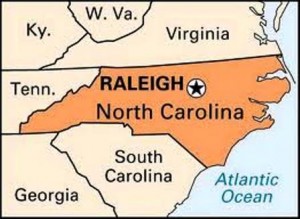 know that it’s a point in the “Research Triangle” – partnered up with Durham and Chapel Hill it offers unparalleled educational and employment opportunities. Yes, Duke and UNC and NC State have major research facilities, resulting in a well-educated workforce in a compressed area; Raleigh ranks 3rd in the country in percentage of capital city residents holding Bachelor’s Degrees, at 47.3%. This, of course, is a real-time factor for attracting business, which in turn (if done right) affects quality of life. » read more
know that it’s a point in the “Research Triangle” – partnered up with Durham and Chapel Hill it offers unparalleled educational and employment opportunities. Yes, Duke and UNC and NC State have major research facilities, resulting in a well-educated workforce in a compressed area; Raleigh ranks 3rd in the country in percentage of capital city residents holding Bachelor’s Degrees, at 47.3%. This, of course, is a real-time factor for attracting business, which in turn (if done right) affects quality of life. » read more
